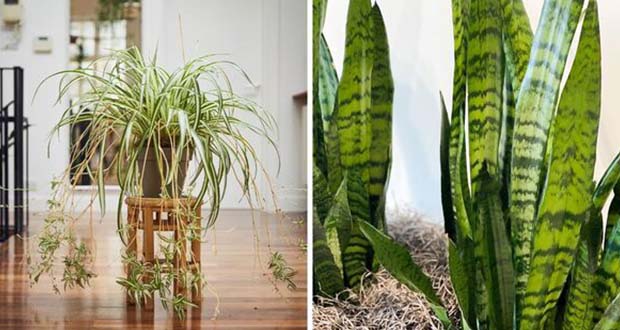
Indoor Plants That Purify Air: A Complete Guide
In addition to being aesthetically pleasing, indoor plants enhance the quality of the air and add vitality to your living areas. Some plants are quite good at eliminating air pollutants, which makes them perfect for homes, workplaces, and other interior areas, according to a number of studies, including NASA’s Clean Air Study. This is your go-to resource for information on indoor air purification plants, their advantages, and proper maintenance.
Benefits of Indoor Air-Purifying Plants
- Improved Air Quality: These plants absorb harmful toxins such as benzene, formaldehyde, and trichloroethylene, which are common in household items.
- Increased Humidity: Many indoor plants release moisture through transpiration, which can help maintain a comfortable humidity level indoors.
- Enhanced Well-Being: The presence of greenery reduces stress, boosts mood, and increases productivity.
- Natural Decor: They add a touch of nature and elegance to any indoor space.
Top Air-Purifying Indoor Plants
1. Snake Plant (Sansevieria trifasciata)
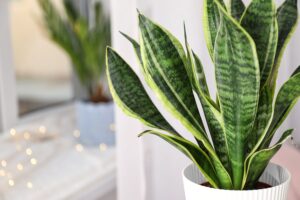
- Key Benefits: Removes toxins like formaldehyde, benzene, and carbon dioxide.
- Care Tips:
- Light: Thrives in low to bright indirect light.
- Water: Allow the soil to dry between waterings.
- Maintenance: Low maintenance and hardy.
2. Peace Lily (Spathiphyllum)
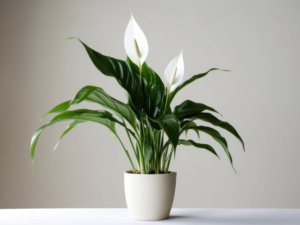
- Key Benefits: Absorbs ammonia, benzene, and trichloroethylene.
- Care Tips:
- Light: Prefers medium to low light conditions.
- Water: Keep the soil moist but not waterlogged.
- Maintenance: Fertilize monthly during the growing season.
3. Spider Plant (Chlorophytum comosum)
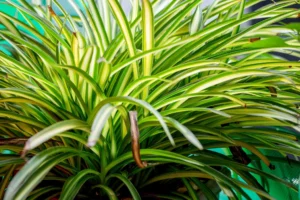
- Key Benefits: Effective in removing carbon monoxide and xylene.
- Care Tips:
- Light: Prefers bright, indirect sunlight.
- Water: Water once the topsoil feels dry.
- Maintenance: Easy to propagate through spiderettes.
4. Aloe Vera

- Key Benefits: Filters formaldehyde and benzene while also offering medicinal properties.
- Care Tips:
- Light: Needs bright, indirect sunlight.
- Water: Water deeply but infrequently, allowing the soil to dry out completely between waterings.
- Maintenance: Requires minimal care.
5. Boston Fern (Nephrolepis exaltata)
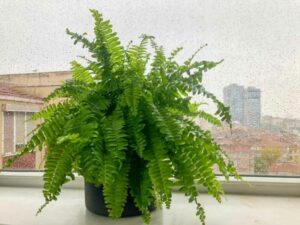
- Key Benefits: Excellent at increasing humidity and removing pollutants like formaldehyde.
- Care Tips:
- Light: Prefers indirect light or shade.
- Water: Needs consistent moisture and high humidity.
- Maintenance: Mist regularly to maintain humidity.
6. Areca Palm (Dypsis lutescens)

- Key Benefits: Acts as a natural humidifier and filters toxins like xylene and toluene.
- Care Tips:
- Light: Thrives in bright, indirect light.
- Water: Keep the soil slightly moist.
- Maintenance: Wipe leaves regularly to prevent dust buildup.
7. Rubber Plant (Ficus elastica)
- Key Benefits: Absorbs airborne toxins and improves oxygen levels.
- Care Tips:
- Light: Bright, filtered light is ideal.
- Water: Water when the top inch of soil feels dry.
- Maintenance: Prune to maintain shape and size.
8. Bamboo Palm (Chamaedorea seifrizii)
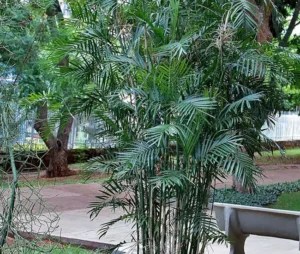
- Key Benefits: Removes airborne toxins and adds humidity to indoor spaces.
- Care Tips:
- Light: Low to medium light.
- Water: Keep soil slightly moist but not soggy.
- Maintenance: Fertilize during the growing season.
ALSO READ: 12 Subtle Signs She Wants To Leave
How to Maximize Air Purification
- Plant Placement: Place plants strategically around your home, especially in areas with poor ventilation or high toxin exposure, such as near windows or in the kitchen.
- Use Multiple Plants: Research suggests that having more plants enhances air purification. Aim for at least one medium-sized plant per 100 square feet.
- Regular Maintenance:
- Dust leaves to allow maximum absorption of pollutants.
- Check for pests and diseases.
- Avoid Overcrowding: Ensure each plant gets adequate space for light and air circulation.
Common Mistakes to Avoid
- Overwatering: This can lead to root rot and attract pests.
- Inadequate Light: Even low-light plants need some light to thrive.
- Ignoring Pests: Regularly inspect for pests such as spider mites or aphids.
- Wrong Plant Selection: Choose plants that suit your indoor environment and care capabilities.
Adding air-purifying indoor plants to your home or office is a simple yet effective way to improve air quality and create a calming environment. Whether you’re a seasoned plant enthusiast or a beginner, these plants are low-maintenance and bring both aesthetic and health benefits.
Transform your indoor space into a green sanctuary today with these amazing air-purifying plants!
Keep watching this space for weekly tips on keeping your spaces clean and purified.





